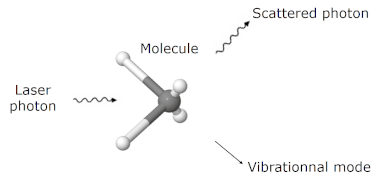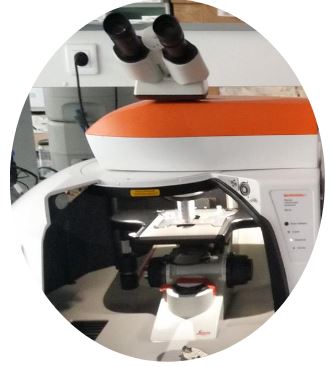Raman spectrometer (RENISHAW)
Theory
The Raman spectroscopy is a vibrational spectroscopy technique similar & complementary to the infrared spectroscopy (FT-IR).
It is based on the inelastic scattering of laser photons. This feature is known as Raman scattering.

The energy of different vibrational modes (then the wavenumbers) is determined by the simple comparison between scattered and incoming photons energy.
Thus, Raman spectroscopy provide both chemical and structural information.
Equipment
The Renishaw Raman spectrometer is composed of different parts:
– a 633 nm HeNe excitation laser
– a Leica microscope with x5, x50, x100 Brightfield and x5, x20, x100 Darkfield objectives. Typical spatial resolution 1 µm.
– a spectrometer, typical spectral resolution: 0.5 cm-1.
Raman mapping can be performed with this system. The Particle Analysis software allows the automatic identification of small scattering particles, such as microplastics. This software collects the coordinates of identified particles and automatically perform the Raman analysis on each of them.
Applications
The Raman spectrometry is commonly used for carbon analysis, in particular for micro & nanostructures (such as nanotubes and graphene).

Example of Graphene: analysis of crystallographic quality (D band), layer stacking (2D and G bands)

Others applications are possible: microplastics analysis, identification of precious stone….


